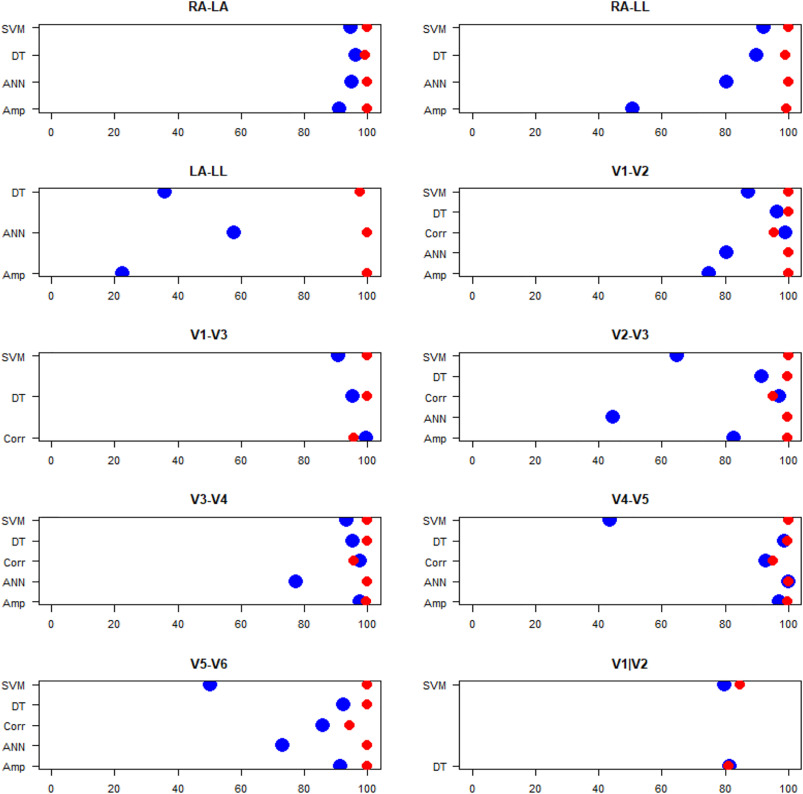Source:-sciencedirect
Highlights
•
ECGs with electrode misplacement can simulate abnormalities such as ectopic rhythm, chamber enlargement or myocardial infarction, which can lead to significant diagnostic errors such as false positive diagnoses of anterior infarction, ventricular hypertrophy, ischemia, or Brugada syndrome.
•
V2 is the most sensitive misplaced electrode with regards to the change in the signal followed by V3, V4 and V1. While V1 and V2 are the most frequent misplaced electrode (>50%).
•
Vertical misplacement of V1 and V2 can show a spurious rSr´ pattern.
•
LA-LL is the most challenging electrode misplacement/interchange scenario for ML to solve.
Abstract
Introduction
Electrode misplacement and interchange errors are known problems when recording the 12‑lead electrocardiogram (ECG). Automatic detection of these errors could play an important role for improving clinical decision making and outcomes in cardiac care. The objectives of this systematic review and meta-analysis is to 1) study the impact of electrode misplacement on ECG signals and ECG interpretation, 2) to determine the most challenging electrode misplacements to detect using machine learning (ML), 3) to analyse the ML performance of algorithms that detect electrode misplacement or interchange according to sensitivity and specificity and 4) to identify the most commonly used ML technique for detecting electrode misplacement/interchange. This review analysed the current literature regarding electrode misplacement/interchange recognition accuracy using machine learning techniques.
Method
A search of three online databases including IEEE, PubMed and ScienceDirect identified 228 articles, while 3 articles were included from additional sources from co-authors. According to the eligibility criteria, 14 articles were selected. The selected articles were considered for qualitative analysis and meta-analysis.
Results
The articles showed the effect of lead interchange on ECG morphology and as a consequence on patient diagnoses. Statistical analysis of the included articles found that machine learning performance is high in detecting electrode misplacement/interchange except left arm/left leg interchange.
Conclusion
This review emphasises the importance of detecting electrode misplacement detection in ECG diagnosis and the effects on decision making. Machine learning shows promise in detecting lead misplacement/interchange and highlights an opportunity for developing and operationalising deep learning algorithms such as convolutional neural network (CNN) to detect electrode misplacement/interchange.
